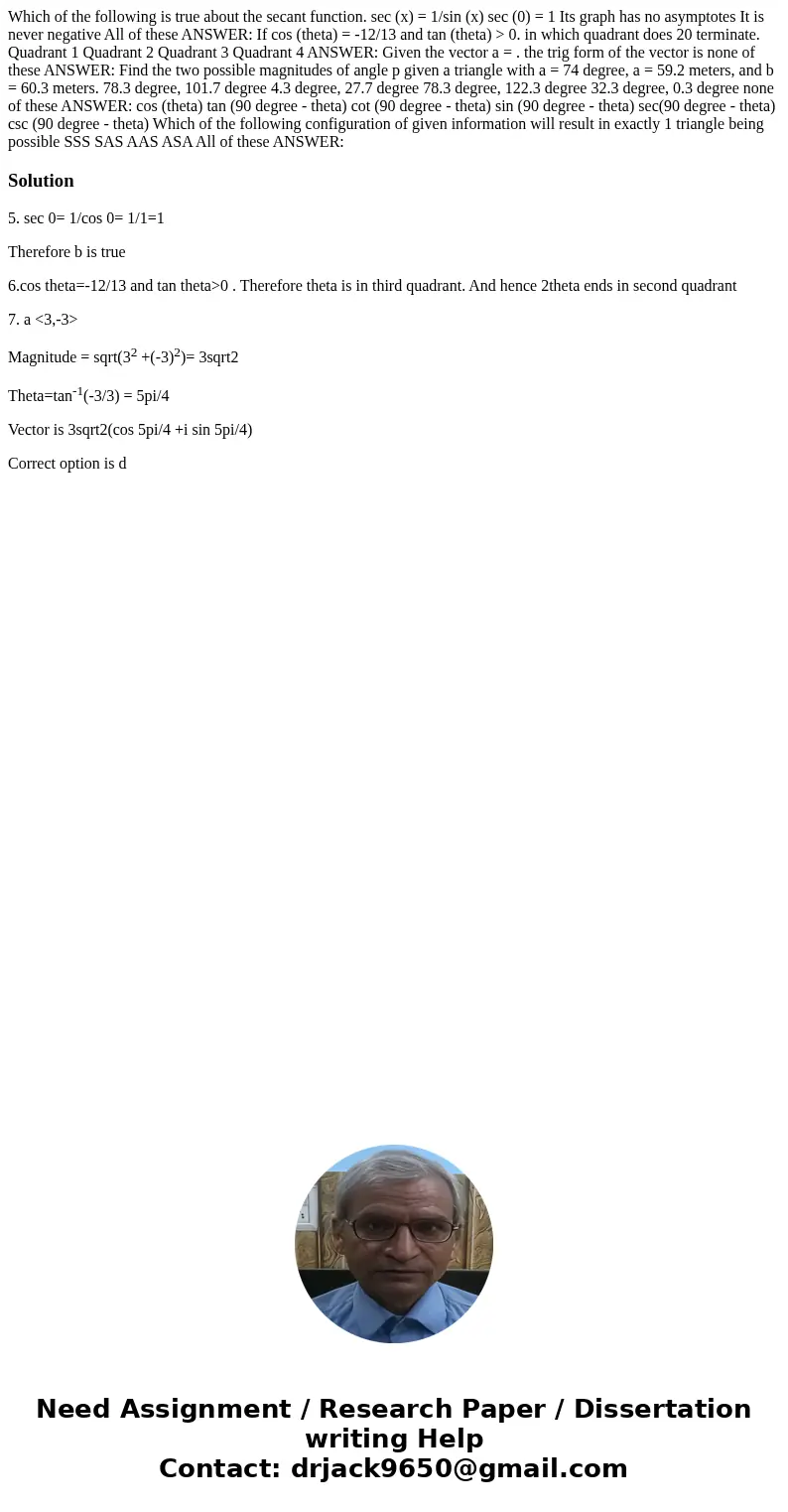Which of the following is true about the secant function sec
Which of the following is true about the secant function. sec (x) = 1/sin (x) sec (0) = 1 Its graph has no asymptotes It is never negative All of these ANSWER: If cos (theta) = -12/13 and tan (theta) > 0. in which quadrant does 20 terminate. Quadrant 1 Quadrant 2 Quadrant 3 Quadrant 4 ANSWER: Given the vector a = . the trig form of the vector is none of these ANSWER: Find the two possible magnitudes of angle p given a triangle with a = 74 degree, a = 59.2 meters, and b = 60.3 meters. 78.3 degree, 101.7 degree 4.3 degree, 27.7 degree 78.3 degree, 122.3 degree 32.3 degree, 0.3 degree none of these ANSWER: cos (theta) tan (90 degree - theta) cot (90 degree - theta) sin (90 degree - theta) sec(90 degree - theta) csc (90 degree - theta) Which of the following configuration of given information will result in exactly 1 triangle being possible SSS SAS AAS ASA All of these ANSWER: 
Solution
5. sec 0= 1/cos 0= 1/1=1
Therefore b is true
6.cos theta=-12/13 and tan theta>0 . Therefore theta is in third quadrant. And hence 2theta ends in second quadrant
7. a <3,-3>
Magnitude = sqrt(32 +(-3)2)= 3sqrt2
Theta=tan-1(-3/3) = 5pi/4
Vector is 3sqrt2(cos 5pi/4 +i sin 5pi/4)
Correct option is d

 Homework Sourse
Homework Sourse